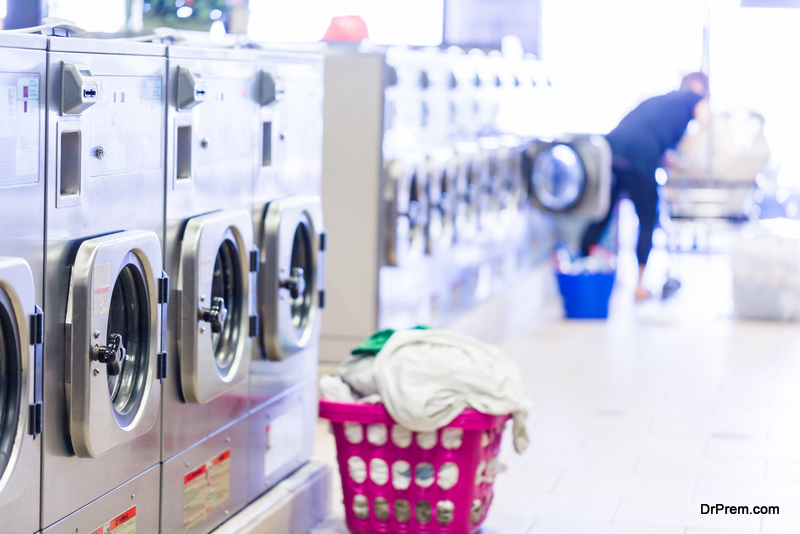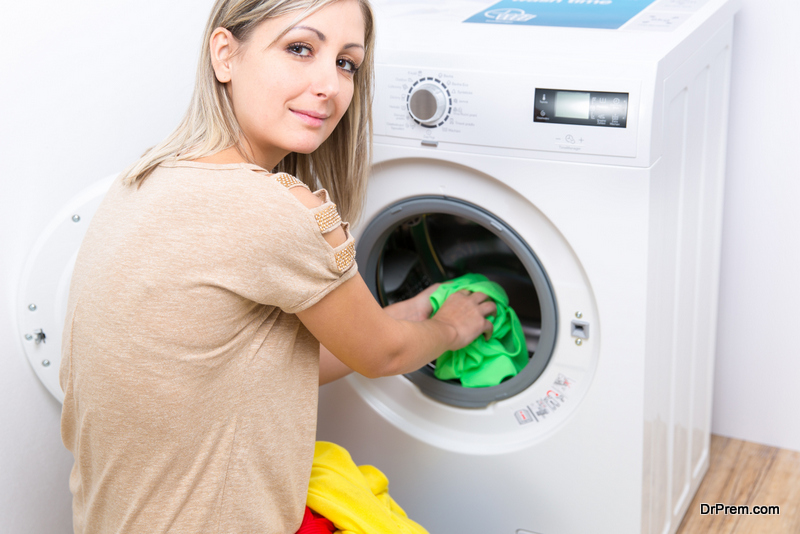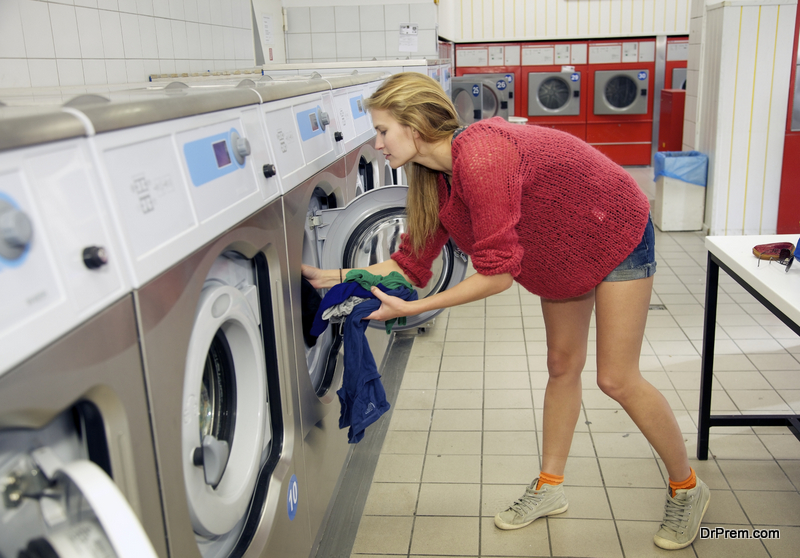There are certain fundamental truths to the universe, and one inescapable fact is that at some point in our lives, we’ll accidentally wash something red with something white. Doing the laundry can be a chore or an escape; the big question is, where do you like to do yours?
1. Laundry Facts
 Last year, over 23,000 laundromats brought in over $5 billion and employed more than 53,000 people. Each week the average American family washes between 8–10 loads of laundry at home, costing at least $400 a year.
Last year, over 23,000 laundromats brought in over $5 billion and employed more than 53,000 people. Each week the average American family washes between 8–10 loads of laundry at home, costing at least $400 a year.
The method you choose depends on a surprising number of factors. For example, homeowners can most likely afford their own washing machine and dryer. People living in dormitories, or large apartment buildings, almost certainly have a laundromat on-site or close-by, since there’s a higher demand for laundry services on a regular basis.
2. A Brief History of the Laundromat
The laundromat (known as a laundrette in the UK) has been a popular place for many people to wash and dry their clothes ever since the first “Washateria” was opened in 1934 by C.A. Tannahill in Fort Worth, Texas.
Although washing machines already existed by this point, they were bulky, expensive things, and a luxury item. Therefore, the Washateria provided an economical alternative for many households. Soon, similar businesses were cropping up everywhere, and not just in the States.
Before long, industrial washers and dryers became the norm, enabling people to clean larger loads than at home. Many laundromats also started to offer additional services, such as dry cleaning. Nowadays, it’s possible to find laundromats open 24 hours a day, seven days a week.
3. Laundromats Vs. Laundry at Home
 At a glance, washing your clothes at home may seem the obvious choice. That is, provided you can afford the equipment. Washing machines are now far more high-tech than ever, with silent spin technology, sensors that weigh the laundry load and set the appropriate cycle, and even timers to program your washing.
At a glance, washing your clothes at home may seem the obvious choice. That is, provided you can afford the equipment. Washing machines are now far more high-tech than ever, with silent spin technology, sensors that weigh the laundry load and set the appropriate cycle, and even timers to program your washing.
We are paying for convenience, and there is no doubt doing laundry in your home is just that. However, there are also more chances of distractions: other housework that needs doing, or children that have to be watched. Then there’s the chore of organizing the dirty clothes into whites, darks, and colors because no one else in your house does it.
Whereas using a laundromat can be a social experience. Just think about all the movies or TV shows you’ve seen that feature scenes in a laundromat; they can be a place to meet new people or engage in conversation. Alternatively, if you prefer a bit of personal space, waiting in a laundromat affords the chance to read a good book.
4. The Future of Laundromats
Even though it’s now possible to find companies who do door-to-door laundry services (e.g., Mr. Jeff in Colombia) or even mobile services for those who don’t have access to a washing machine (such as Orange Sky in Australia), there are still innovations to be found in laundromats.
For example, as we become more of a cash-less society, businesses (like laundromats) that rely on coin-operated machines risk becoming more and more obsolete. Therefore, many laundromats have started to employ technology in different ways, to keep (and entice) new customers.
Innovators ensure an affordable or otherwise hassle-free service that remains key to a laundromat’s continued success and popularity. Shinepay mention the need to no longer carry change with you. Instead, you can pay on an app. Other laundromats offer free Wi-Fi or, as in the case of Lavano in Hamamatsu City, Japan, cafe and lounge facilities!
Conclusion
Laundromats will continue to evolve. Some people even think they will end up becoming more cost-effective than doing laundry at home. Whichever method you prefer, laundromats will always have a place in our society. If you’ve never used one, perhaps now is an excellent time to see what all the fuss is about!
Article Submitted By Community Writer




